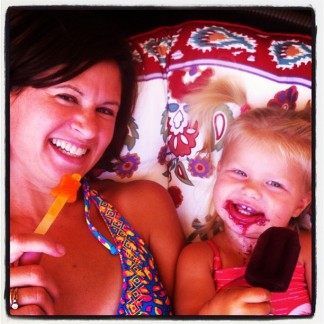
by Raindrop Administrator | Nov 3, 2015 | Emotions, Family Therapy
I’m so excited about this month of social media. I’ve decided that for me, it’s going to be a month of play. It’s November, Halloween just got us in the mood and there are more holidays lined up for the next 2 months that at any other time of year. Let’s get in the mood for play, and not feel bad about it. Because Play is good for you, your loved ones will love it, and it will be therapeutic for you.

- You need Play
Do you play? If you were given a couple hours to have fun, what is it you would do? Imagine yourself doing that now. Really put yourself there. How does it feel? What do you notice about your body? We need rest, we need to smile, we need to stop worrying, and play does all of this for us. Getting us into that place of relaxation allows us to work more productively, think more clearly and be more intentional about our relationships.

- Play with your kids
Some people find it easy to play with their kids, others really want to but don’t know how to do this. I want to encourage you not to make it harder than it needs to be. You don’t need to play like other parents play. Figure out what you enjoy doing, and find a way to play at that with your child. If it’s sport, then play sport. If it’s baking, then let them put the sprinkles on the cupcakes or learn how to break eggs. If you can’t think of what to do, play hide and seek or rough and tumble on the ground. These two classic games are always favourites. Know that even when you put a couple minutes a day into some sort of playful time with your kids, you are building your relationship with them. There are 3 things that are most important to kids – fun, games and play. When you join them in this, you are speaking their language, their hearts will open and you will grow closer.
- Play is therapeutic
Play is good for us on many different levels. Actually it’s essential for healthy development. Play benefits the brain. Frost first spoke about this in 1998, saying, “during the first years of life, it is playful activity, not direct instruction, seclusion, deprivation, or abuse that makes a positive difference in brain development and subsequent human functioning”. He goes on to quote Nash (1997) who reported from research at Baylor College of Medicine that “…children who don’t play much or are rarely touched develop brains 20% to 30% smaller than normal for their age”.
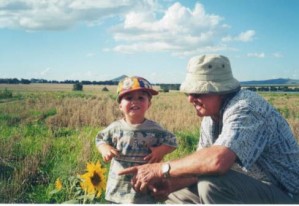
Play helps us to develop social skills. I smiled a couple days ago as I listened to my 5 yr old daughter play in her room with 2 neighbors. She was being her bossy self, and her friends called her out for being bossy. I considered going in to enforce the lesson, but after listening outside the door for awhile, I realized that they were doing a great job of working it out together as kids. It allowed her to see herself through the eyes of peers, and it gave them an opportunity to be assertive. In Japanese preschools, the custom is to allow children to work out their own difficulties and not to step in unless necessary. This gives children a change to engage in conflict, and also learn how to negotiate and learn cooperation.
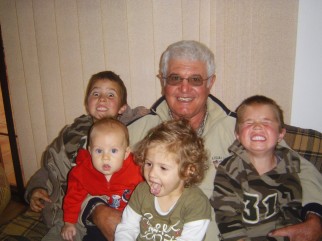
Have fun today. Find something to laugh about, someone to smile with, and something to live for.
Happy playing
References:
Frost, Joe L.
TITLE Neuroscience, Play, and Child Development.
PUB DATE 1998-06-00
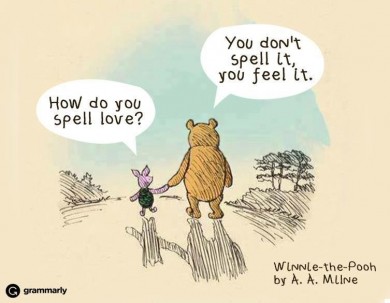
by Raindrop Administrator | Sep 30, 2015 | Couples in Therapy, Therapy
How badly do you want to be a good couples therapist?
Being a good couples therapist requires determining what you really believe about people and relationships, and then pouring yourself into the practice of a philosophy and theory. Getting to a place where you can practice what you believe, will go a long way in making you a good couples therapist.
I was fortunate to have been trained in a Masters program that insisted that we select one theoretical orientation to practice from. They were not prescriptive about which family systems orientation to adopted, but we did have to make a decision and then dedicate ourselves to the approach. And so once I had decided, every paper that I wrote over the next 3 years, had to represent a theoretical view of change. I searched and searched to find a philosophy of therapy that I believed in. And it’s paid off. Not only externally in terms of my practice effectiveness, but also internally in my confidence in what I believe in and what I do.
Lebow’s (2012) research looks at the factors for change across different models of couples’ therapy. He shows that it’s not a therapists age, gender, race or even experience that determines success. The factors that do affect outcome of treatment are the therapist’s friendliness, sensitivity and a good balance of being directive and non-directive. Alliance is key because the longer clients stay in treatment the better chance they have for success. Alliance is about having a common goal, as well as keeping even the strength of the individual alliance with each partner. The therapist’s passion about their approach makes a difference. If you believe in your approach, the client feels it and adopt the philosophy.
This makes it important for therapist to know what they are doing, to be able to communicate this to their clients and to do so congruently.

I’m reminded by the early wisdom of Socrates who said “Know Thyself”. Having the courage to question our self is so important in our becoming clear, integrated human beings. And therapists, who are taking other people’s lives into their hands, have a responsibility to do the same.
So how do you figure out what you believe and which theory fits best for you? What do you believe about each of these aspects of psychology:
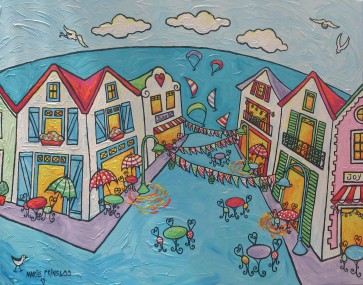
What is normal and abnormal behavior?
What needs to change for people to be more integrated?
How do people change and how do we bring that about as clinicians.
What Unit of Treatment will you work with and why?
My theory of choice is Emotionally Focused Therapy. EFT is based on Attachment Theory, Experiential Theory and Systems Theory.
Attachment Theory:
We foster the creation of secure bonds between people. Attachment assumes that people are designed to live in relationship. Close connections keep us safe in times of danger.
Experiential theory:
We expand and re-organize key emotional responses. Experiential theory believes that when emotion is unprocessed, it results in symptoms. The best way to process emotion is in the present, and so the work is in the here and now. People who experience the right environment, are able to make changes and adjust better to life, and so the therapist’s role is that of creating safety and building a relationship with the client.
Systems theory:
We create a shift in partner’s interactional positions and initiate new cycles of interaction. Communication theory states that we are affected by the behavior/communication of those around us, and this easily leads to negative feedback loops. These circular loops give way to rigid cycles that become self-maintaining. The job of the therapist is to recognize the rigid pattern and we make it explicit.
As you approach what you do in the therapy you practice, take a good look at the assumptions underlying your theoretical foundation. And ask yourself whether this is something you believe in as a person. Asking yourself these tough questions is essential. Once you know what you believe in and why, you will better be able to communicate this to your clients, and as we have seen, the research shows that it makes a difference. Your clients are aware of your approach and your passion.

by Raindrop Administrator | Sep 25, 2015 | Emotions, Therapy
It’s time to go to therapy!
I’m predicting that most of us have either considered starting therapy, or we have been on the receiving end of someone telling us to go. It can be so hard to go to therapy. Why is that?
We are scared to go and sit on a couch, and tell someone what we are dealing with. We are scared for various reasons:
1. Admitting I need therapy, is admitting there is something wrong with me
On the contrary, I think it takes guts and wisdom to see a therapist. Socrates encouraged us to “know thyself!” Getting to know yourself doesn’t take forever. There’s only one of you, and so you only have to get to know yourself once. Trust me, you’re not that complicated!
Contentment comes from having good balance. From knowing who you are and what your body needs. Once you care for yourself, you can function better. Your body will stop sending you symptoms when you understand the reason they exist.
The definition of insanity is to keep doing the same thing but to expect a different result. Going to therapy, is doing something different. It’s allowing an objective observer help you to understand yourself. They give you new perspective, and this leads to change.
I think that going to therapy is the ultimate gift for yourself. Someone listening to every word you have to say? You become the center of the universe for awhile, and we all have the need to be seen and to be heard.
2. Hearing I need to change, and that there is a problem, means I am failing on some level
Many of us would like to have a better relationship, and so therapy is proposed as a way to achieve this. We can’t make other people do things, we can’t make them change, and sometimes the more we ask them to come to therapy, the less inclined they are to listen.
I bet when you are beseeching someone to sign up for therapy, all they hear is that, “our relationship is in danger”, and, “I’m not good enough, I’m not making my spouse happy”. Any wonder they shutdown and won’t listen?
It’s true though. Success in getting someone to take your suggestion, does depend on the way you approach them. But I know it’s frustrating and sad for you, because this couldn’t be further from the truth. You are inviting them to go with you because you care about the relationship. You respect them and want to include them in the process. You are hoping for greater intimacy, longing for a better relationship.
Ask yourself whether your loved one is hearing criticism from you, or whether they are hearing your longing, your hopes and dreams for your relationship.
Before inviting them, ask yourself this question: If my relationship were all I wanted it to be right now, how would I be different? And then speak from this place. For example:
I’m experiencing a longing inside for greater connection, I think our relationship could benefit from this. I’d like to grow in this relationship, would you come with me so I can face my fears about trusting people? You’ve mentioned that you’d like me to change in some areas and I’m ready to explore these, I need your help to do this, would you come with me?
Lastly, if your loved one isn’t open to hearing about this from you, consider having someone else talk with them. Sometimes we need to hear the same thing, from a couple different people.
3. I will feel uncomfortable and the therapist will judge me.
Maybe you’re one of those people right now who can‘t think of anything worse than going to therapy, sitting on a couch in front of a stranger and telling them your life story. Worse, they will start to look at you in that knowing way, analyzing your life and asking you all manner of intrusive questions. What could be more uncomfortable, what could seem more inappropriate.
Therapists are trained not to judge. I also wouldn’t want to sit across from someone who analyzes me. Number 1 research says that therapy works when you feel safe and comfortable with your therapist. Remember that you’re not signing your life away. You can make a phone call to a therapist and see how you feel whilst talking with them. Many therapists are willing to meet with potential clients for 30min so that you can interview them. It’s important that you chose the right therapist for you, and of upmost importance that you feel safe and comfortable with them. You can be the judge of that!
4. The therapist will pity me and therapy won’t help
You don’t want a therapist who is going to sit and just listen to you. Therapy costs a lot of money, and you want to know it’s worthwhile. As therapists, we follow a model of treatment, and at anytime in treatment, we can tell you what we are doing, and why. We follow a 9 step model, and we all share an agreed upon goal. There are things you can implement between sessions that will help you achieve your goal. Ultimately the work in therapy will start to generalize into your life outside of the office. Change is a process, be prepared to give it a little time. I often ask clients to commit to 4-8 sessions of treatment, in order to start to benefit from some of the changes.
I hope you decide to give therapy a try. I have found it so worthwhile in my own life. I really hope that you can make the changes that you desire too.

by Raindrop Administrator | Jun 9, 2015 | Office Updates
The Horse Whisperer Inspires Good Attunement
I recently watched the movie “Buck”. It’s about the life of Buck Brannaman who was the inspiration for the novel and movie, “The Horse Whisperer”. This movie tells the story of Buck, who endured a traumatic childhood, yet also developed a gift of working with horses. This documentary interweaves Bucks gift of reading and training horses, with the life experiences he gained from being a survivor of horrendous childhood abuse. Today, Buck travels around the country offering horse clinics, where he works on horsemanship that is based on really understanding horses and finding ways to teach them to do the work they need to do, by primarily relying primarily on a strong relationship with them. He works with many horses who have been treated badly, and also works on breaking horses in, but he is respectful and develops an intuitive reciprocal relationship in which the horses respond to him out of trust. People bringing their horses to work with Buck, talk in this movie about ways their lives are touched through working with Buck. They talk about growing as people and working through their own personal pain and losses as they develop a healing relationship with their animals.
This documentary really touched me, and it reminded me so much of the work we do in EFT. Watch this clip that I believe encapsulates the heart of what Buck teaches.
Challenge yourself. Can you imagine just being with someone, and getting a feel for them. This is what we do help clients to do better for themselves and each other in session. Buck makes a statement, “It would be better to use 90% mental and 10% physical….”. Jim Furrow having watched this said, “it would be better to use 90% relational/emotional and 10% rationale/cognitive.” He goes on to say it’s a nice illustration for Greenberg’s notion of “guiding” and “following” in working with emotional processing. And then we can apply this to our relationship with ourselves, and look at when we lose this feel with ourselves in session. It’s so easy for us to get anxious or overwhelmed when we fall out of attunement with our clients or EFT as a theory, and these are moments to have that “feel” with ourselves. When we can self-attune, we can self-regulate, and as we self-regulate, we can once again repair with EFT and our clients, and we are back in the game.

by Raindrop Administrator | May 20, 2015 | Family Therapy
When did you last look at your loved one really closely? When was the last time you looked at a situation you were struggling with, and really studied it closely?
We often hear in Emotionally Focused Therapy (EFT) that slower is better. Slower is better, because the more we slow down, the more emotion is allowed to the surface, and therefore, the more we can expand experience. Expanding experience allows us to see new things, and when we see and feel new things, we communicate this in different ways and this calls for new responses. This can lead to change in EFT.
I came across a video of my children a couple days ago, and I hit slow mo on my camera by accident, eliciting this video. As I sat and watched the video, I was amazed to see these kids. They just looked beautiful in this moment, and I noticed so many little intricacies about them. It was a special moment, as I attuned more closely, saw them a little more clearly, and appreciated them a little more nearly.
So I encourage you today, to look at those you love and slow things down, try to see them in slow mo. When last did you really look at the person you love, and notice something new about them? If you’re struggling as you work with clients, consider videotaping your session, and slow it down. Stop and play, consider, listen again and again.
On a personal note, my children are struggling with sibling rivalry. After writing this blog, I realized that I need to stop and slow down, and really just listen to what is happening between them. The more I study the situation, the better I will understand what is going wrong, and the better chance I have of responding with a successful intervention.











